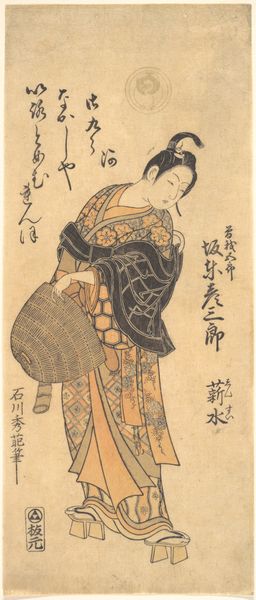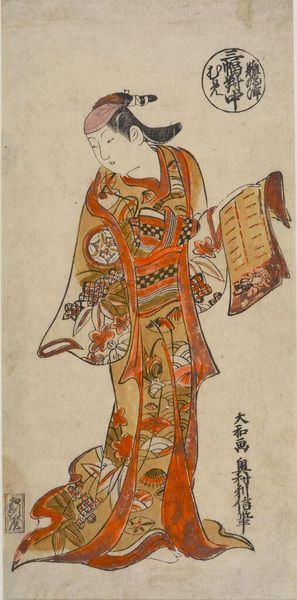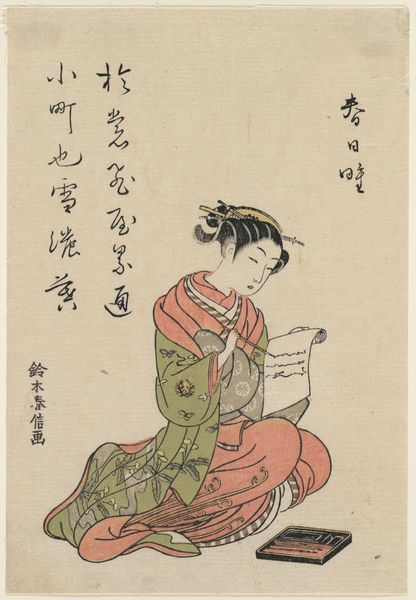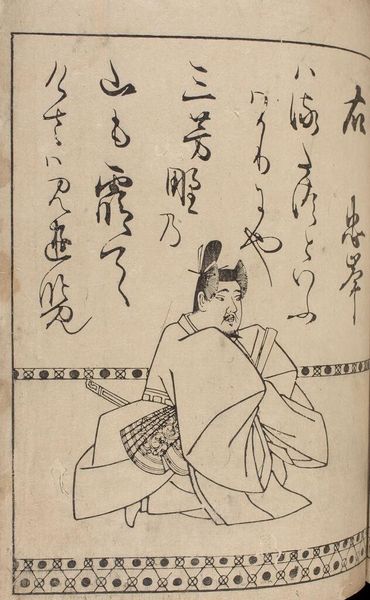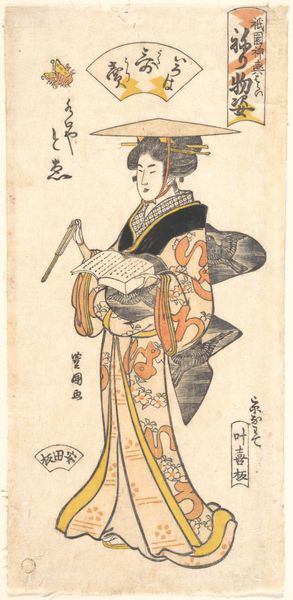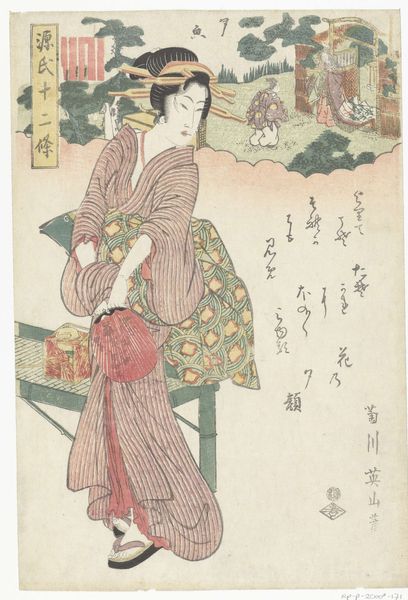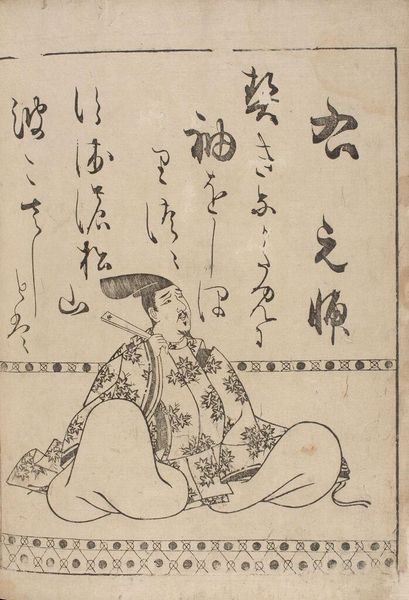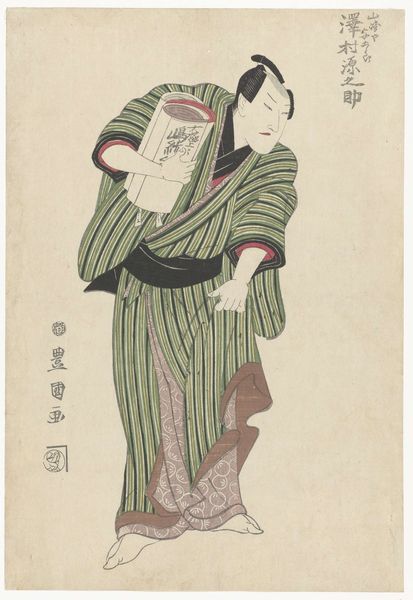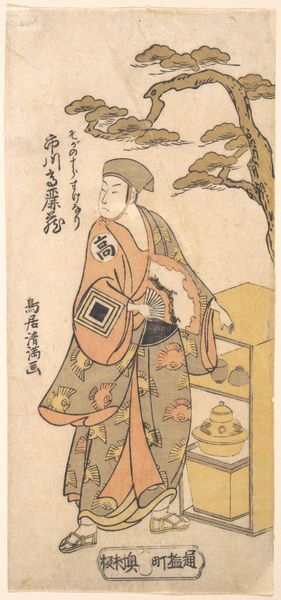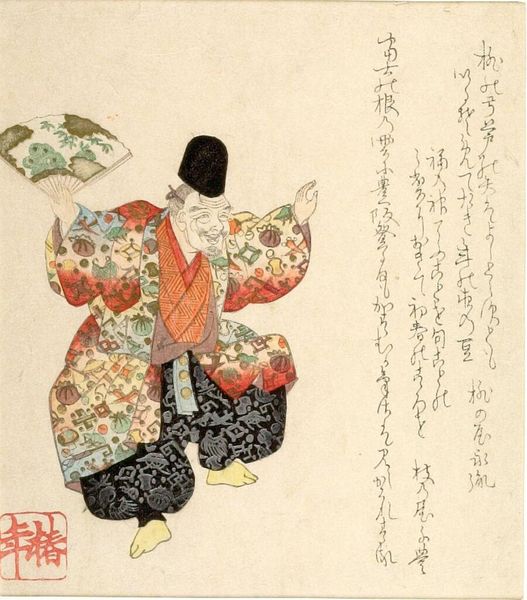
The Kabuki Actor Segawa Kikunojō II as a Woman Reading a Letter 1750 - 1770
0:00
0:00
print, woodblock-print
#
portrait
# print
#
asian-art
#
ukiyo-e
#
woodblock-print
Dimensions: H. 28 1/8 in. (71.4 cm); W. 4 3/8 in. (11.1 cm)
Copyright: Public Domain
Editor: We're looking at "The Kabuki Actor Segawa Kikunojo II as a Woman Reading a Letter," a woodblock print by Torii Kiyomitsu, dating between 1750 and 1770. It's currently held at the Metropolitan Museum of Art. The color palette is really striking—restrained, almost muted. I'm curious about how you interpret this piece, especially given the formal constraints of Ukiyo-e prints. Curator: Focusing on its internal elements, observe the verticality. Kiyomitsu orchestrates the figure, inscription, and seals into a unified vertical design. How do the lines contribute to the overall visual harmony, particularly considering the elongated format, a hosoban print? Editor: The verticality does seem essential, guiding the eye from top to bottom. The curving lines of the robe contrast with the rigid lines of the letter. Curator: Precisely. Now, let's look at the composition itself. How does Kiyomitsu employ spatial relations, or rather the absence of depth, to emphasize flatness characteristic of the Ukiyo-e tradition? Does the design rely on line and shape to convey the subject's character? Editor: It feels deliberate. The flattening intensifies the focus on the intricate details of the kimono and the actor's poised gesture, like a study in patterns and controlled forms. Curator: Note the contrast between areas of intricate patterns of the kimono and the flat planes, allowing visual breathing space. How does that structural opposition inform your understanding? Editor: I think it underscores the artificiality inherent in Kabuki theatre—the artifice is celebrated rather than hidden. Curator: Exactly. By meticulously attending to details such as the elaborate hair ornament and makeup, Kiyomitsu emphasizes theatrical performance. This form is essentially examining surfaces, using aesthetics as its primary language. Editor: I see it. Focusing on the structure highlights its artificiality and the skill of the artist, rather than aiming at representation. Thanks for offering that new perspective! Curator: Indeed, scrutinizing the intrinsic forms allows deeper dialogue between the object and viewer.
Comments
No comments
Be the first to comment and join the conversation on the ultimate creative platform.

